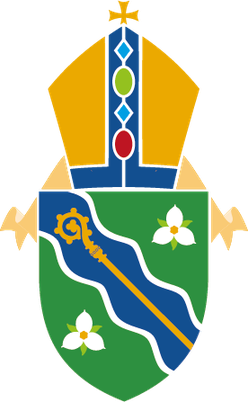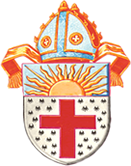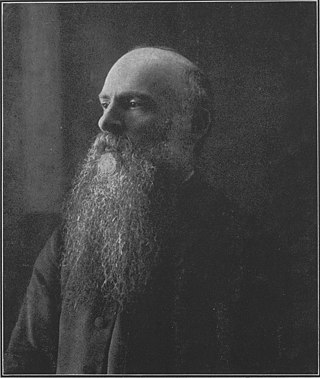The Anglican Diocese of Western Newfoundland is a diocese of the Ecclesiastical Province of Canada of the Anglican Church of Canada. It comprises 77 congregations grouped in 30 parishes in Western Newfoundland, with approximately 17,888 souls. Most parishes are multipoint - with more than two congregations - with only one full-time clergy. As of 2012, the diocese had 20 full-time and over 350 lay ministers. As of 2019, this Diocese allows clergy to officiate same-sex marriages.

The Diocese of Niagara is one of thirty regional divisions in the Anglican Church of Canada. The see city of the diocese is Hamilton, with the bishop's cathedra located at Christ's Church Cathedral on James Street North. Located within the ecclesiastical province of Ontario, it borders the Dioceses of Huron and Toronto. The area enclosed by the Diocese of Niagara includes much of the Golden Horseshoe, and moves north to include Erin and Orangeville as far as Shelburne. Moving sharply south, the boundary includes Mount Forest and widens, south-westerly to include Elora and Guelph. Skirting Brantford and the Territory of the Six Nations Confederacy, the line then travels, again, south-westerly to Jarvis and Lake Erie to include the entire Niagara Peninsula. Major urban centres within its borders are St. Catharines, Niagara Falls, Hamilton, Guelph, Oakville, Milton, Burlington, and Orangeville.

The Diocese of Qu'Appelle in the Anglican Church of Canada lies in the southern third of the civil province of Saskatchewan and contains within its geographical boundaries some 50 per cent of the province's population of one million.
The Diocese of Toronto is an administrative division of the Anglican Church of Canada covering the central part of southern Ontario. It was founded in 1839 and is the oldest of the seven dioceses comprising the Ecclesiastical Province of Ontario. It has the most members of any Anglican diocese in Canada. It is also one of the biggest Anglican dioceses in the Americas in terms of numbers of parishioners, clergy and parishes. As of 2018, the diocese has around 230 congregations and ministries in 183 parishes, with approximately 54,000 Anglicans identified on parish rolls.
The Ecclesiastical Province of Rupert's Land, founded in 1875, forms one of four ecclesiastical provinces in the Anglican Church of Canada.

The Anglican Diocese of Calgary is a diocese of the Ecclesiastical Province of Rupert's Land of the Anglican Church of Canada, located in the southern part of the civil province of Alberta. It was established in 1888. The diocesan boundaries are: on the south, the border between Alberta and the United States; on the east, the Alberta-Saskatchewan border; on the west, the Alberta-British Columbia border and on the north, an uneven east–west line drawn across the province just north of Lacombe forms the northern boundary of the Diocese of Calgary and the southern boundary of the Diocese of Edmonton. This area of about 82,000 square miles (210,000 km2) includes regions of mountain, foothills, parkland and prairie. The see city is Calgary. Other cities in the diocese are Red Deer, Medicine Hat and Lethbridge.

The Diocese of Montreal is a diocese of the Ecclesiastical Province of Canada of the Anglican Church of Canada, in turn a province of the Anglican Communion. The diocese comprises the 21,400 square kilometres (8,300 sq mi) encompassing the City and Island of Montreal, the Laurentians, the South Shore opposite Montreal, and part of the Eastern Townships. The See city is Montreal, and the cathedral is Christ Church. The diocese maintains approximately 9,000 on its parish rolls in about seventy parishes.

The Diocese of The Arctic is a diocese of the Ecclesiastical Province of Rupert's Land of the Anglican Church of Canada. It is by far the largest of the thirty dioceses in Canada, comprising almost 4,000,000 km2 (1,500,000 sq mi), or one-third the land mass of the country. As the name indicates, the diocese encompasses the Arctic region of Canada including the entirety of the Northwest Territories, Nunavut, and the Nunavik region of northern Quebec. The see city is Iqaluit, Nunavut, and the diocese's nearly 34,000 Anglicans are served by 48 parishes. The administrative offices of the diocese are located in Yellowknife, Northwest Territories.

The Diocese of Rupert's Land is a diocese of the Ecclesiastical Province of Rupert's Land of the Anglican Church of Canada. It is named for the historical British North American territory of Rupert's Land, which was contained within the original diocesan boundaries.
The Diocese of Algoma is a diocese of the Ecclesiastical Province of Ontario of the Anglican Church of Canada. It comprises nearly 182,000 square kilometres of the Ontario districts of Algoma, Thunder Bay, Sudbury, Manitoulin, and parts of the districts of Nipissing and Timiskaming. The diocese forms a wide band stretching from just west of Thunder Bay on the northern shore of Lake Superior east to the border of Ontario and Quebec. Neighbouring Anglican dioceses are Rupert's Land to the west, Moosonee to the north, Ottawa to the east, and Ontario, Toronto, Huron to the south.
The Company of the Cross was a lay religious order which was affiliated with the Anglican Church of Canada when founded in 1957 by Frank Wiems and Ted Byfield. For many years, the Company operated under the authority of the Anglican bishops in Winnipeg, the diocese of Edmonton and the diocese of Toronto On November 17, 1990, the Company of the Cross was unincorporated in Manitoba.
The Diocese of Moosonee is a diocese of the Ecclesiastical Province of Ontario of the Anglican Church of Canada. It was created in 1872 from part of the Diocese of Rupert's Land, in what is now the Province of Rupert's Land, and transferred in 1912 to the new Province of Ontario. Now headquartered in Timmins, Ontario, it was originally headquartered in Moose Factory. Its first bishop was John Horden.
The Anglican Diocese of Athabasca is a diocese of the Ecclesiastical Province of Rupert's Land of the Anglican Church of Canada, in the northern half of the civil province of Alberta. It was created in 1874 by the division into four parts of the original Diocese of Rupert's Land. The Synod of the Diocese of Athabasca was organized in 1876. The diocese was then itself subdivided in 1892 to create the new dioceses of Selkirk and Mackenzie River and in 1933 to create the Diocese of The Arctic.
The Diocese of Saskatchewan is a diocese of the Ecclesiastical Province of Rupert's Land of the Anglican Church of Canada formed in 1874. Its headquarters are in Prince Albert, Saskatchewan. The Diocese of Saskatoon was split off from it in 1933.

The Diocese of Caledonia is a diocese of the Ecclesiastical Province of British Columbia and the Yukon of the Anglican Church of Canada.
The Diocese of Kootenay is a diocese of the Ecclesiastical Province of British Columbia and the Yukon of the Anglican Church of Canada.
The Diocese of Saskatoon is a diocese of the Ecclesiastical Province of Rupert's Land of the Anglican Church of Canada. Its territory is a band across the middle of the province of Saskatchewan. It was separated from the Anglican Diocese of Saskatchewan in 1933. The motto of the diocese is Sursum Corda - Lift up your hearts, a phrase from the service of Holy Communion. The cathedral church is St. John the Evangelist, built in 1912. Many rural parishes are multi-point charges.
The Diocese of Yukon is a diocese of the Ecclesiastical Province of British Columbia and Yukon of the Anglican Church of Canada. It comprises 13 parishes across the Yukon and parts of northern British Columbia.
The Territory of the People is a "recognized territory [with] the status of a diocese" formed in 2002 out of the former Anglican Diocese of Cariboo, part of the Ecclesiastical Province of British Columbia and the Yukon of the Anglican Church of Canada.










